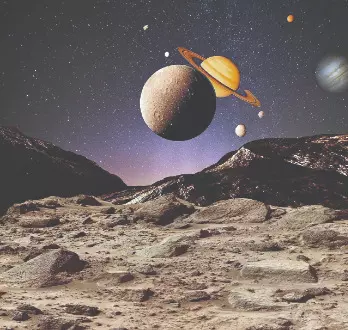Researchers find ‘strongest evidence’ of life outside Solar System, say more data needed

New Delhi: Hints of molecules known to be produced by marine organisms have been detected on an exoplanet, providing “the strongest evidence yet” of life outside the Solar System, researchers have said, cautioning that more data is needed.
‘K2-18 b’ is an exoplanet over 8.5 times as massive as Earth, where previously molecules containing carbon, such as methane (CH4) and carbon dioxide (CO2), have been found. The exoplanet lies 120 light-years from Earth and orbits the star ‘K2-18’.
In this study, the researchers, led by those from the University of Cambridge, UK, analysed data recorded by NASA’s James Webb Space Telescope and found fingerprints of ‘dimethyl sulphide’ and ‘dimethyl disulphide’ — known to be produced on Earth by microbes, such as a marine phytoplankton.
The molecules provide “the strongest evidence yet that life may exist on a planet outside our solar system”, even as how they formed on K2-18 b remain unknown, the team said in a statement.
However, lead researcher, Nikku Madhusudhan, professor of astrophysics and exoplanetary science at the University of Cambridge, said that while the results are exciting, it’s vital to obtain more data before claiming that life has been found on another world.He added that while he is cautiously optimistic, there could be previously unknown chemical processes at work on K2-18b that may account for the observations.
“We report new independent evidence for (dimethyl sulphide) and/or (dimethyl disulphide) in the atmosphere at 3-sigma (statistical) significance, with high abundance (over 10 parts per million by volume) of at least one of the two molecules,” the authors wrote in the study published in the Astrophysical Journal Letters.
“More observations are needed to increase the robustness of the findings,” they wrote.
In a 2023 study, published in the Astrophysical Journal Letters, the team documented evidence of “abundant” levels of carbon-containing gases -- methane and carbon dioxide -- in the atmosphere of K2-18, which was found to be rich in hydrogen.
“The abundant CH4 and CO2, along with the nondetection of ammonia (NH3), are consistent with chemical predictions for an ocean under a temperate H2-rich atmosphere on K2-18 b,” the authors wrote in the 2023
study. The team had also detected “potential signs” of dimethyl sulphide. The molecule is considered to predict life in a Hycean world, which is a type of exoplanet entirely covered by an ocean beneath a hydrogen-rich air.
“We didn’t know for sure whether the signal we saw last time was due to (dimethyl sulphide), but just the hint of it was exciting enough for us to have another look with the James Webb Space Telescope using a different instrument,” Madhusudhan said.
The latest results are an “independent line of evidence, using a different instrument than we did before and a different wavelength range of light, where there is no overlap with the previous observations”, he explained.
“The signal came through strong and clear,” the lead researchera added.
Finding fingerprints of molecules that hint at possible life “poses profound questions concerning the processes that might be producing them,” co-author Subhajit Sarkar, from Cardiff University, UK, said.
The team now looks to conduct further research to determine whether dimethyl sulphide and dimethyl disulphide can be produced non-biologically.



